Tracing the steps of the 26 Martyrs of Nagasaki

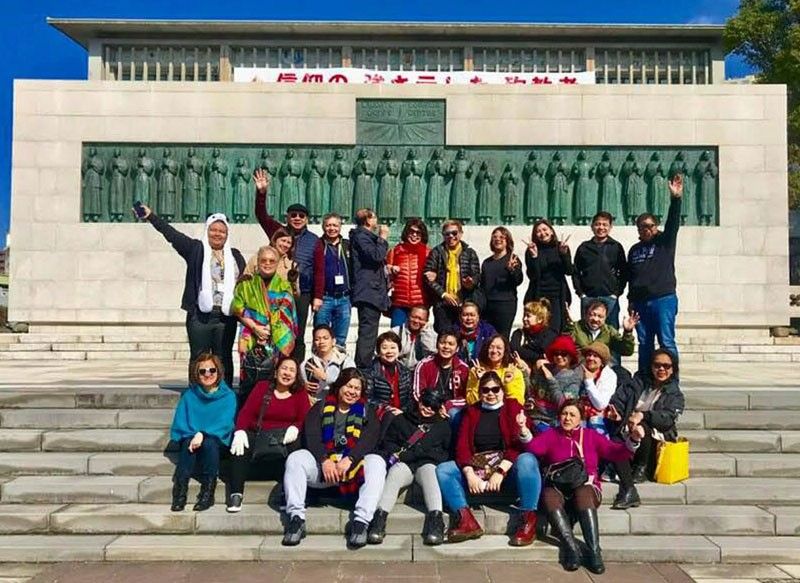
‘If you have doubts, if your faith is now lukewarm, go to Nagasaki. Go back to the roots, and look for the grains that have been bestowed upon us by the early Christians.’
A shipwreck, fake news and greed. Could these possibly be the reasons why the early Christians were persecuted and killed in Nagasaki during late 15th century?
This question ran through my head while listening to our tour guide Sachiko as she animatedly recounted the story of the 26 martyrs who gave up their lives for the propagation of the Christian faith in Nagasaki Prefecture, touted as the Rome of the Far East.
We were at the entrance of Hirado Castle — which boasts a commanding view of the Hirado Port — where a monument commemorating the landing of Franciscan friar Fr. Pedro Bautista (now St. Pedro Bautista) stands.
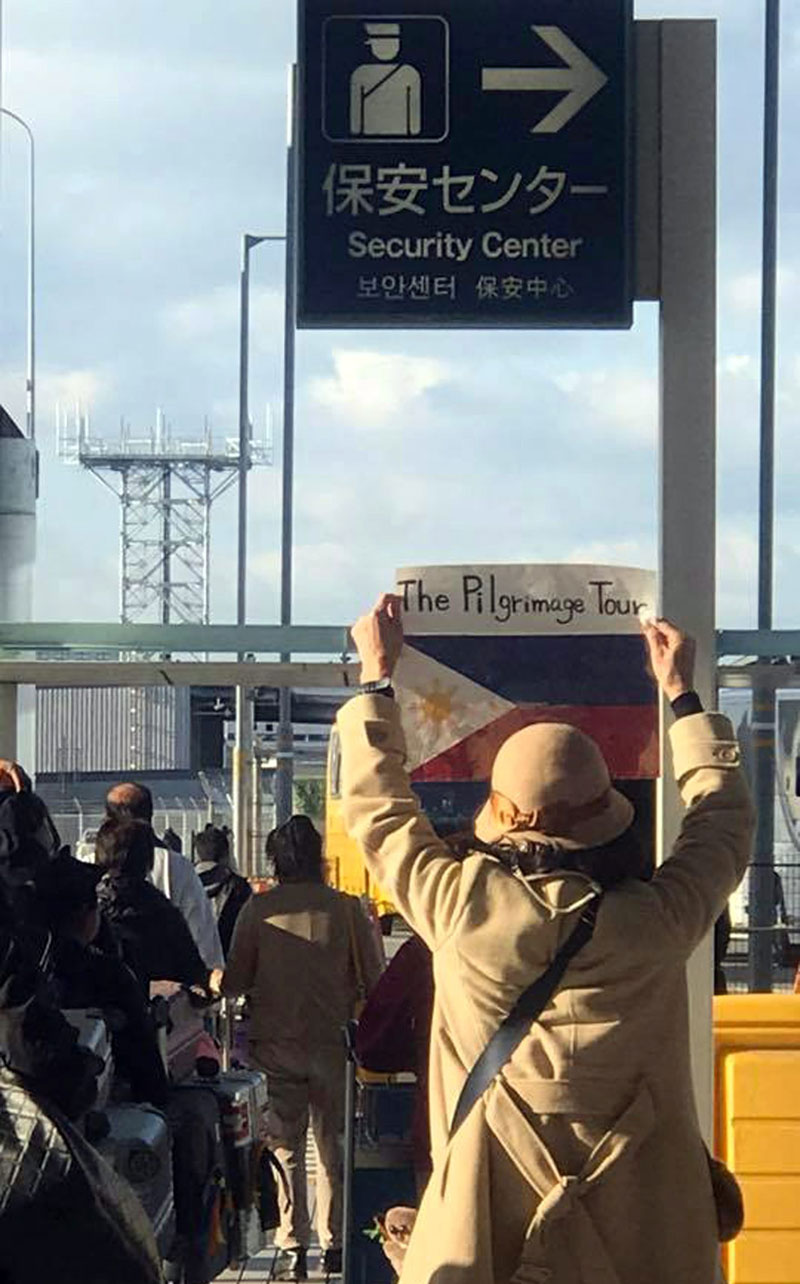
Tour guide Sachiko welcomes the Filipino pilgrims to Nagasaki.
St. Bautista was one of the 26 martyrs who endeared himself to Filipinos. Not only did he built hospitals and churches in the Philippines. He also prevented a tyrant from invading our country.
“As you can see in the marker, the title bestowed to St. Pedro Bautista was embajador. He was sent by Governor General Perez Dasmariñas as an ambassador because at that time, Toyotomi Hideyoshi threatened to invade the Philippines. He said the Filipinos should recognize him or else he would attack Manila. There were only 200 Spanish soldiers in Manila then so Dasmariñas knew that they were outnumbered,” related BuhayParty-List president and former LRTA administrator Mel Robles, a devotee of St. Pedro Bautista.
St. Pedro Bautista and Hideyoshi soon became friends. St. Bautista was allowed and “was even given land by Hideyoshi where he could practice Christianity.”
Until that fateful San Felipe Galleon shipwreck in 1596.
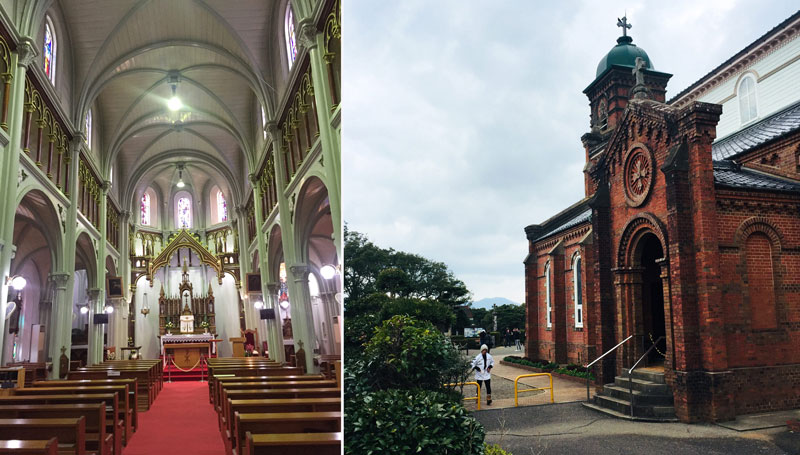
The stained glass on the dome of Tabira Catholic Church, which is a nationally designated site for cultural heritage, features the 26 Martyrs of Nagasaki.
Hideyoshi and his people wanted to loot the ship. They wanted to seize all the merchandise — gold, silk, silver — from Manila to Acapulco.
“And that’s when St. Bautista, who acted as the ambassador, stepped in. He told Hideyoshi’s men not to do that because ‘we’re friends,’” related Robles.
But Hideyoshi’s men stood their ground and told St. Bautista that the only reason he was in Nagasaki was to preach Christianity. The captain of the ship intervened and tried to scare Hideyoshi’s men by telling them that the Spaniards would invade Japan if they insisted. The captain even mentioned that the friars were the Spanish King’s advance party.
“That statement (fake news) triggered Hideyoshi to wage war against the missionaries,” said Robles.
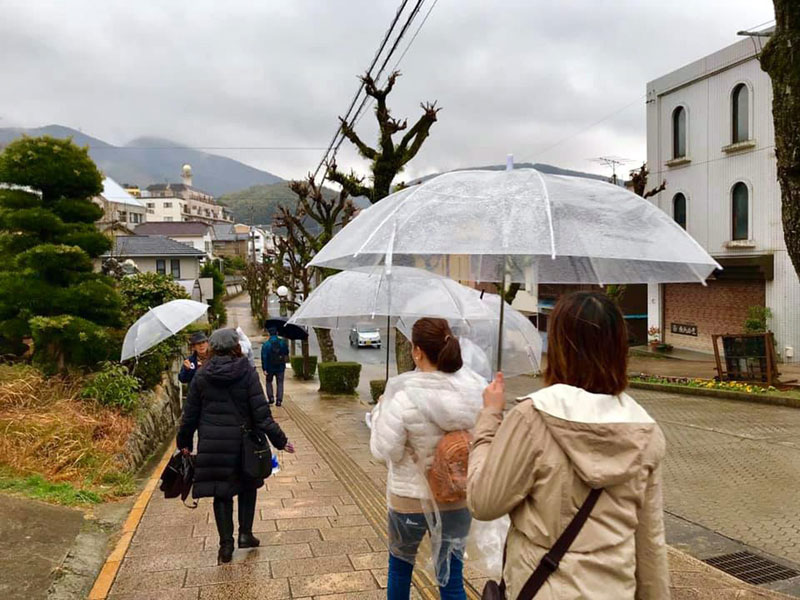
The pilgrims brave the heavy downpour and strong wind during the 12-km. walk.
At that time, Hideyoshi was already alarmed as the number of Japanese Catholics rose so fast. “He wanted the cargo so badly and just used the friars’ mission to spread Christianity as the reason for the execution,” noted Robles.
Hideyoshi ordered the arrest and death of all missionaries. On Dec. 8, 1596, the missionaries were arrested and imprisoned in Kyoto. And on Feb. 5, 1597, Hideyoshi ordered the execution of the 26 missionaries in Nagasaki.
“I believe that it was about Hideyoshi’s greed that led to the ban of Christianity and eventually the execution of the missionaries.”
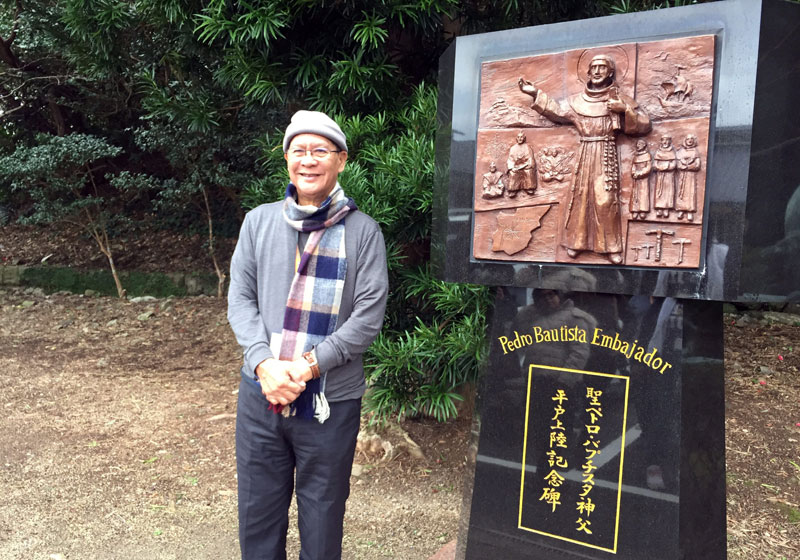
Fr. Efren “EJ” Jimenez, pilgrimage chaplain, beside the monument commemorating the landing of St. Pedro Bautista, one of the 26 martyrs, in Hirado.
A devotee of St. Pedro Bautista, Robles, together with the Nagasaki Tourism Office and Rosemarie Galang of Ephesus Travel & Tours, helped organize this pilot pilgrimage to Nagasaki to reacquaint Filipinos with St. Pedro Bautista and inspire those who are starting to question/doubt their faith.
“St. Pedro Bautista is basically unknown to most Filipinos despite everything that he has done for us,” said Robles who was active at San Pedro Bautista Church in San Francisco Del Monte, QC, during his childhood days. “Also, so many things have been said about the Catholic church. This pilgrimage should be the shot in the arm of your Christian faith.”
Christianity grew by leaps and bounds in Japan, which today boasts a rich harvest of saints.
After the 26 martyrs came the 16 martyrs, among whom were our very own St. Lorenzo Ruiz and two women — an Augustinian sister and Dominican sister.
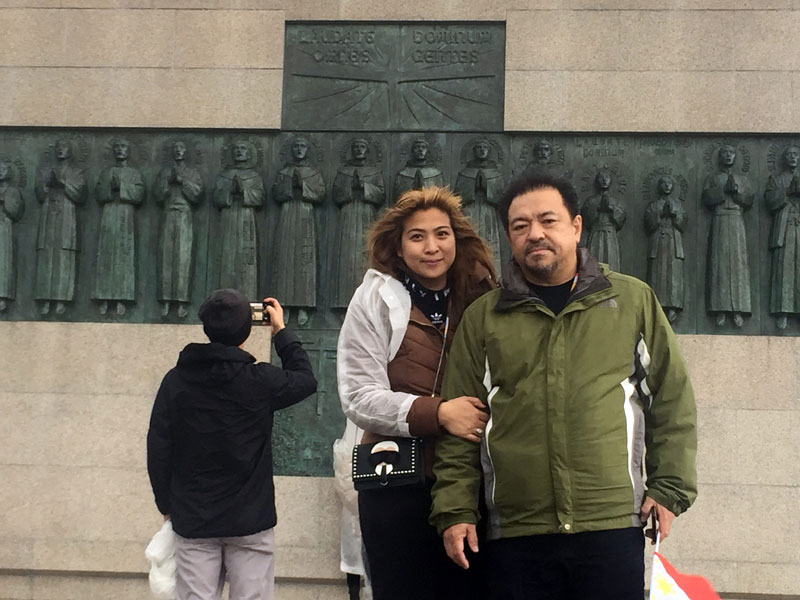
BuhayParty-List president Mel Robles with partner Sherwil Tobias
A walk to remember
I was part of the 31-member delegation, which prides itself as the first (official) pilgrims to undertake this spiritual journey to Nagasaki Prefecture, located southwest of Japan, which boasts a rich Christian missionary history.
“The 26 martyrs walked 900 kilometers from Kyoto to Nagasaki before they were executed by Hideyoshi’s men. Don’t worry, you will not walk that far,” our tour guide Sachiko said with an impish grin right after the dawn Thanksgiving Mass at the Kamikozaki Church in Hirado, said to be the place which became the settlement of “believers” who migrated from Kuroshima and Goto Island.
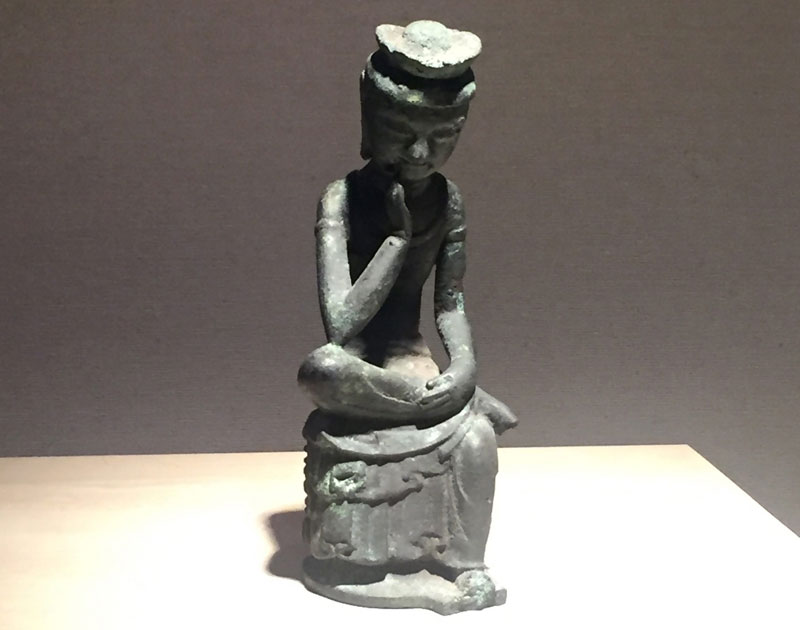
This Buddhist statuette was used by hidden Christians of Ieno machi, Nagasaki, instead of the image of Christ to avoid persecution.
From Kamikozaki, we proceeded to Tabira Church, which is a nationally designated site for cultural heritage (architecture). The stained glass on the church’s dome depicts the 26 martyrs of Nagasaki.
From there, we followed the road in Nagasaki where the 26 martyrs walked. It was noontime when we arrived at Sonogi Port where we visited the “Twenty Six Martyrs Board Monument,” a huge rock perched on a solid platform.
“The 26 martyrs arrived on this port one balmy afternoon on Feb. 4, 1597 — the day before their execution,” shared tour guide Sachiko.
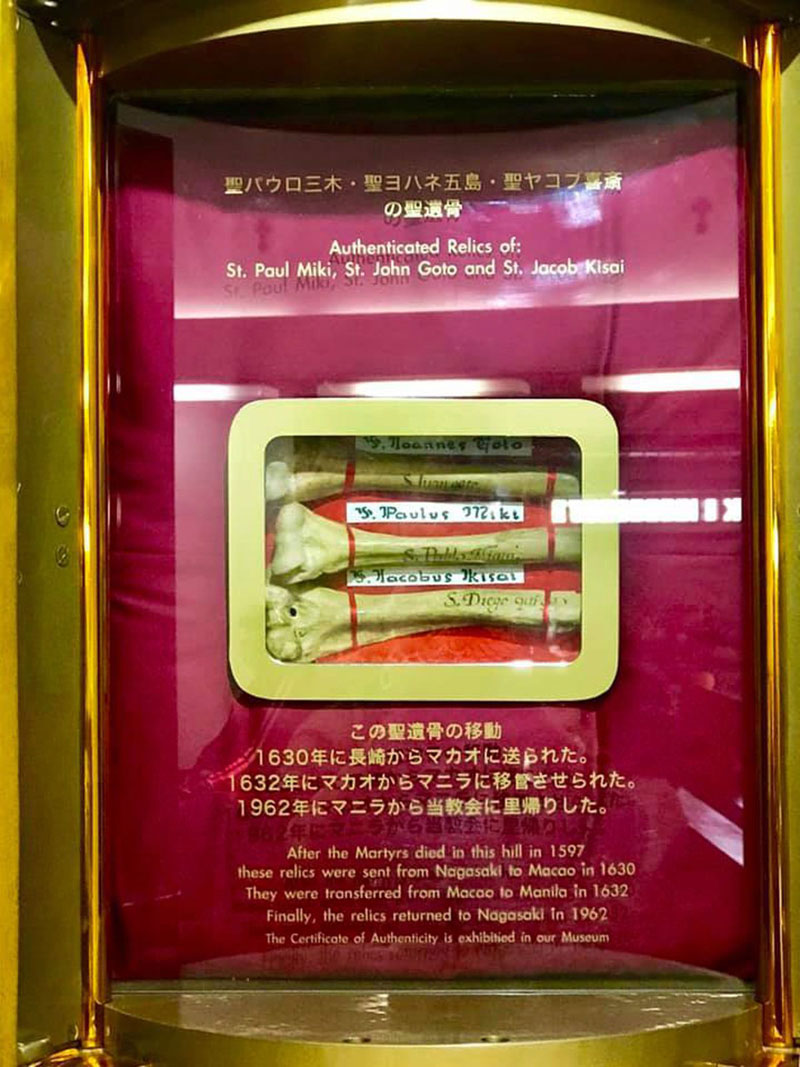
Authenticated relics of St. Paul Miki, St. John Goto and St. Jacob Kisai
The area is surrounded by mountains. “So on their way here, the 26 Christians walked past several mountains. When they reached the highest peak, St. Bautista sat on a rock, closed his eyes and cried.”
A Japanese guard saw him crying, laughed at him and informed the troops that St. Pedro Bautista was afraid to die.
“Gonzalo Garcia, another Franciscan friar, corrected the guard. He told him that the reason St. Bautista cried was because he believed he failed the mission,” added Sachiko. “When the guard heard it, he sympathized with St. Bautista. At that moment, he was converted.”
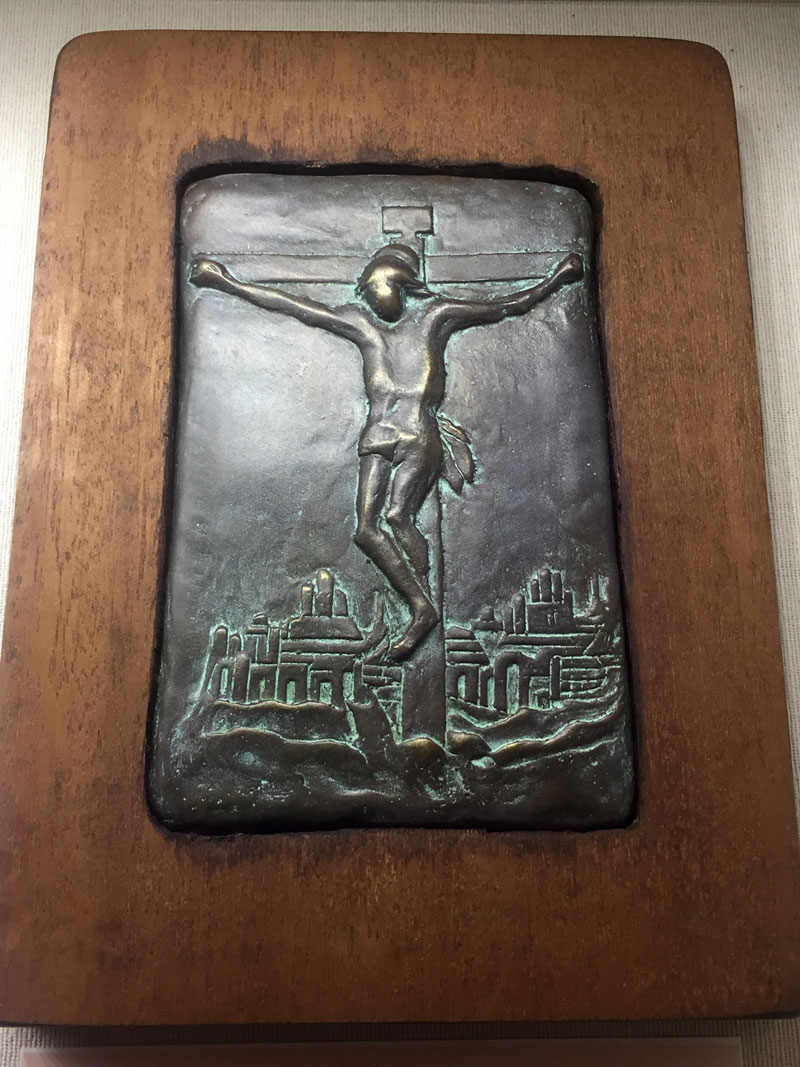
Fumie image used in the movie Silence
The huge rock symbolizes the rock that St. Pedro Bautista sat on. “That’s what probably our National Hero Dr. Jose Rizal felt when he was writing La Patria Adorada. He also had that moment. In fact, he said that if the Spaniards would kill him, how could he go on with his mission,” said. Fr. Efren G. Jimenez, pilgrimage chaplain.
This pilgrimage was extra memorable to Fr. EJ because when he was ordained as a young priest way back in 1970, his first assignment was at San Pedro Bautista Church.
It was raining when we arrived at Tokitsu in Omura, the pilgrimage’s starting point. Armed with our raincoats and umbrellas, we braved the heavy downpour and the strong wind during the 12-km. walk.
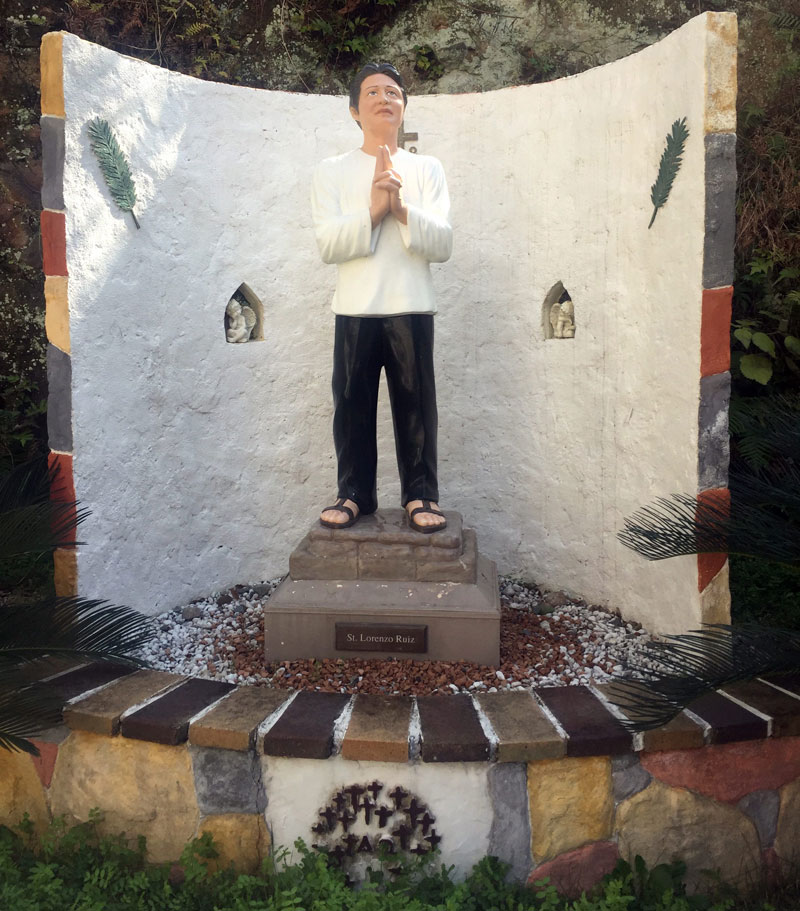
Statue of St. Lorenzo Ruiz at the Japan 26 Martyrs Museum
The route passed through mostly paved roads, residential areas, beautiful churches, even graveyards. It took us four hours to reach our final destination — the Nishizaka Hill where a monument memorializes the 26 martyrs.
By this time, our group was already cut in half. Some couldn’t take the cold, others were hungry and exhausted. I, too, almost gave up because my feet (soaked in rainwater) were already numb. And then it hit me: this little inconvenience was nothing compared to what the 26 martyrs went through.
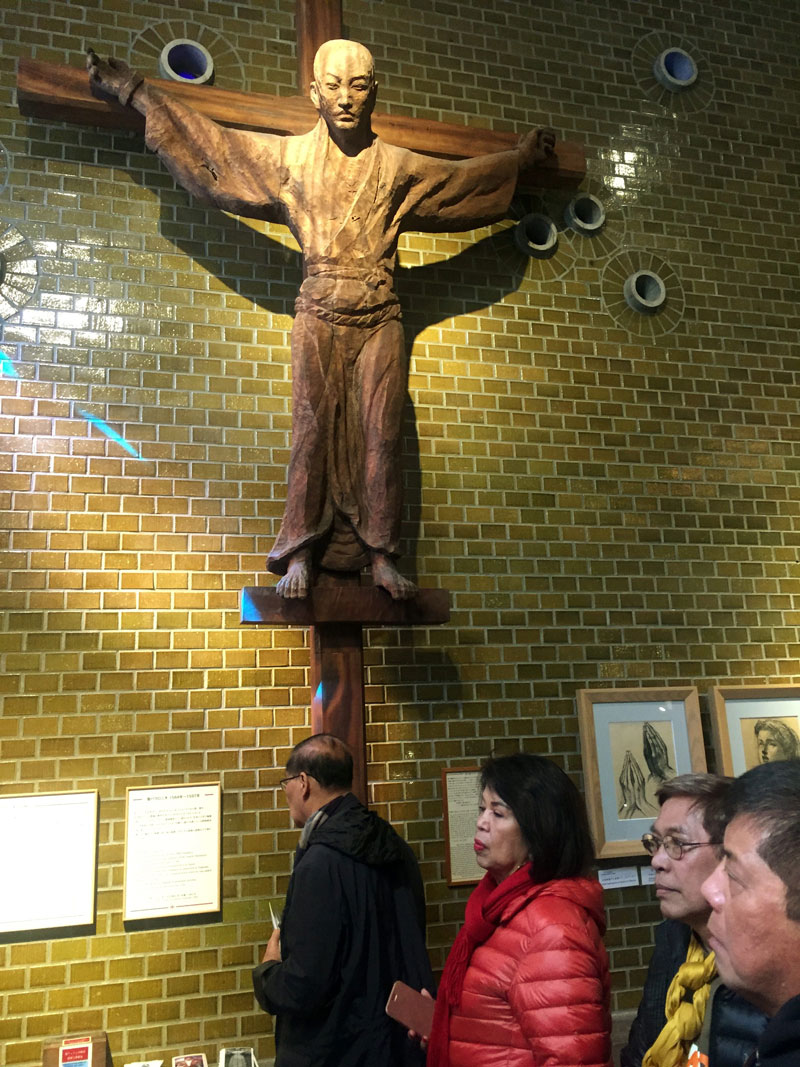
Fr. Efren Jimenez, pilgrims Anabel Wisniewski, Jessie Ombao and Ricardo Villanueva admire the statue of St. Paul Miki at the Japan 26 Martyrs Museum.
“If you have doubts, if your faith is now lukewarm, go to Nagasaki. Go back to the roots, and look for the grains that have been bestowed upon us by the early Christians. We have to look back and find out what Christianity is all about,” Robles told me as we head to Nakamachi Church to attend the memorial Mass for the martyrdom of the 26 saints.
* * *
Ephesus Travel & Tours offers a pilgrimage trip to Nagasaki. For inquiries, call 526-5211, 527-1251, email inquire@viasancta.com,rsg@ephesustravelmanila.com or visit www.viasancta.com.



















